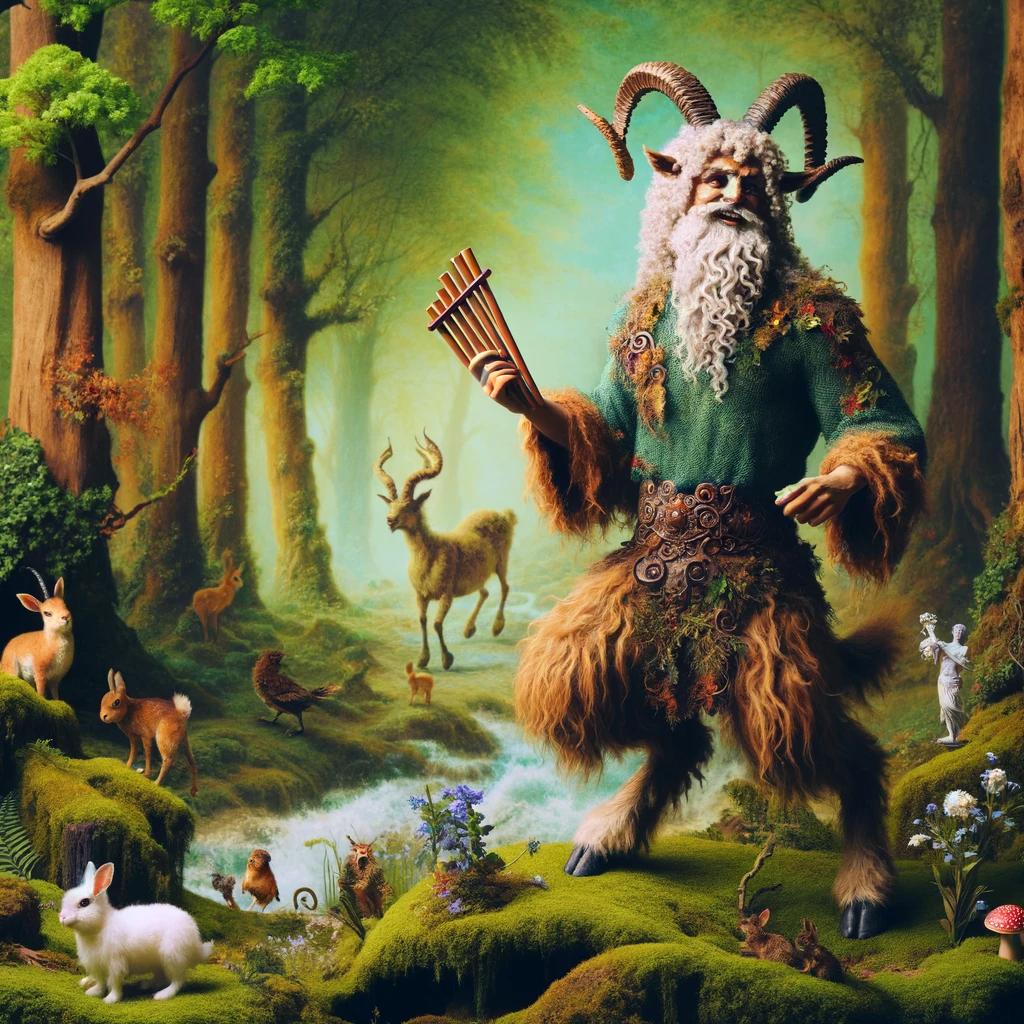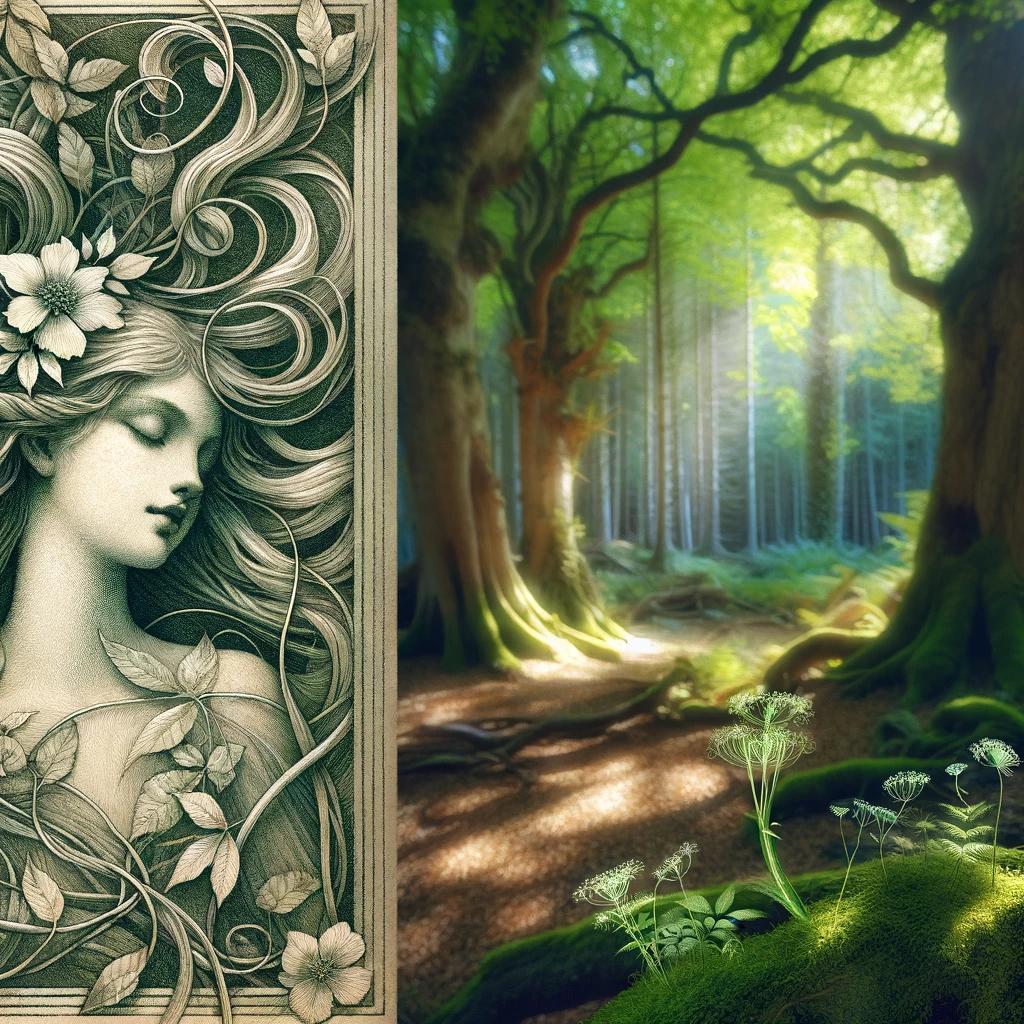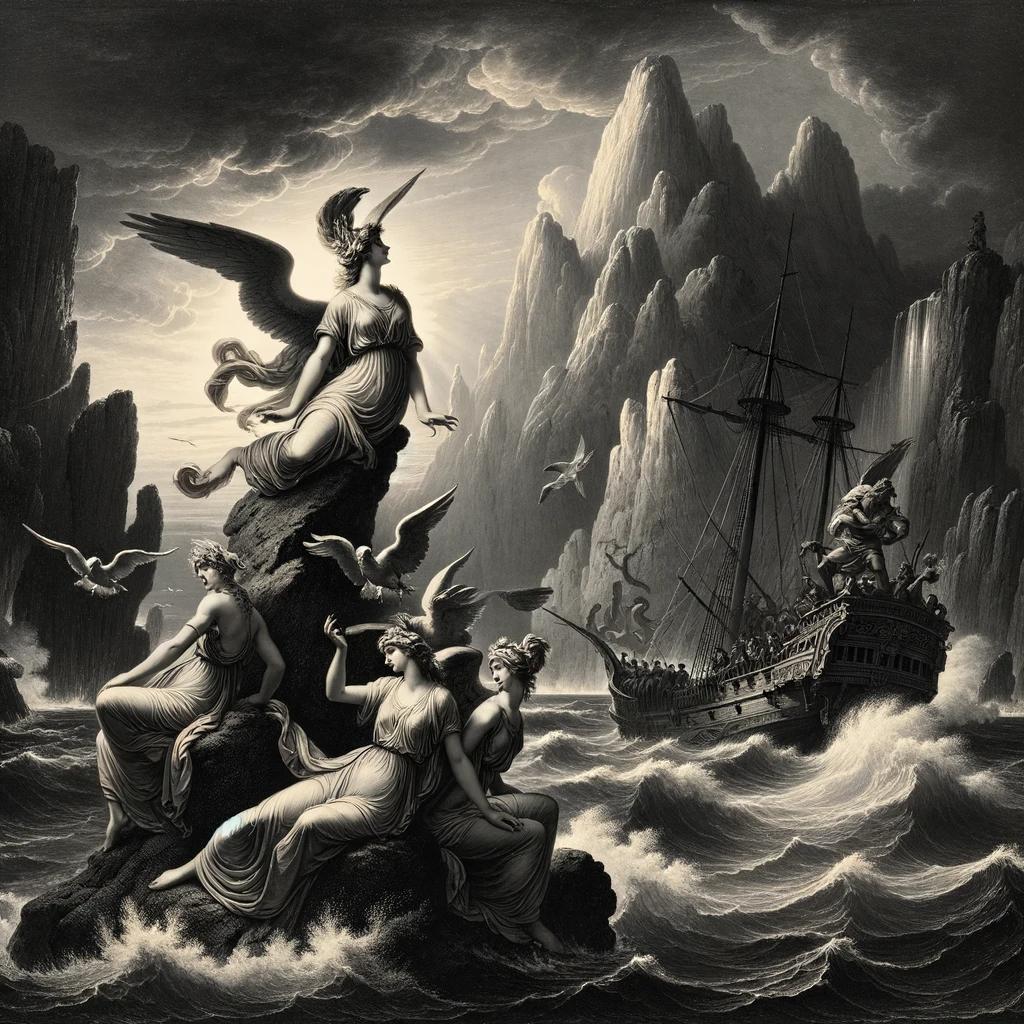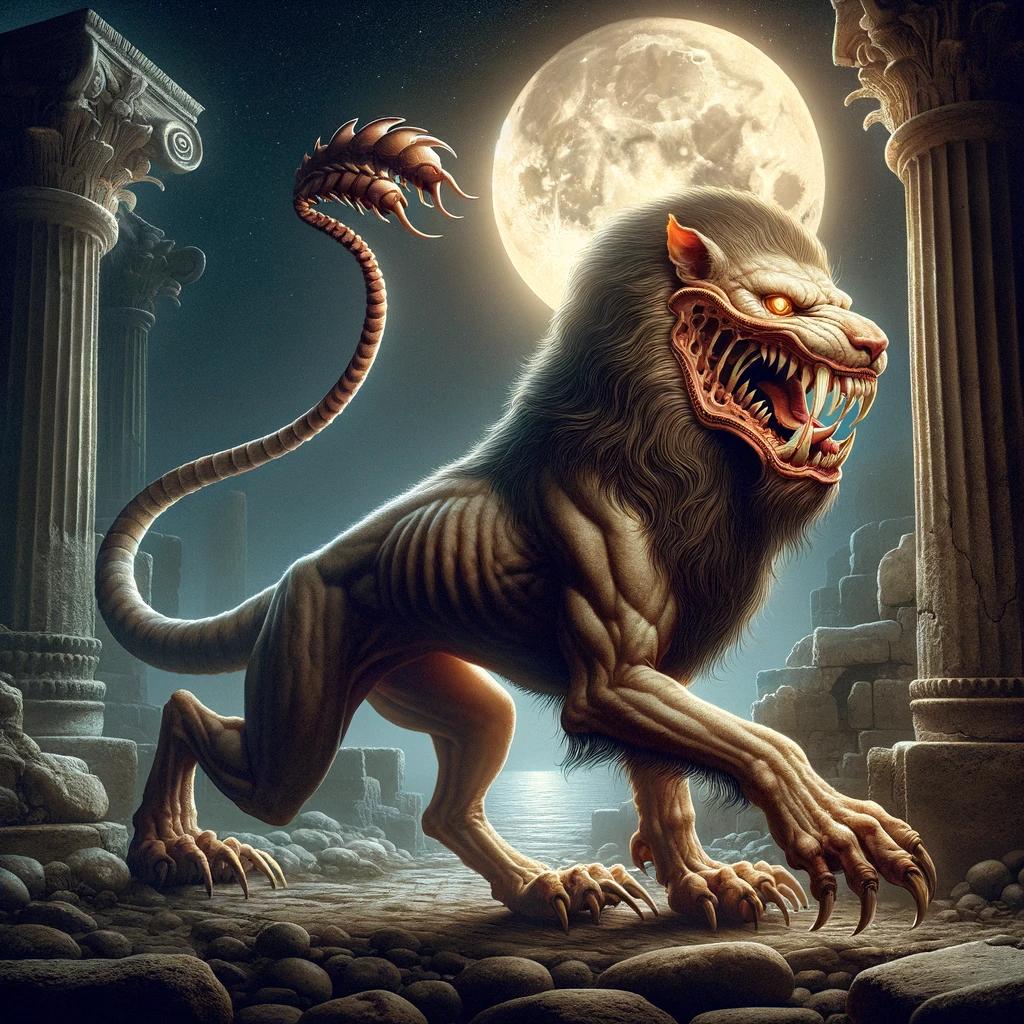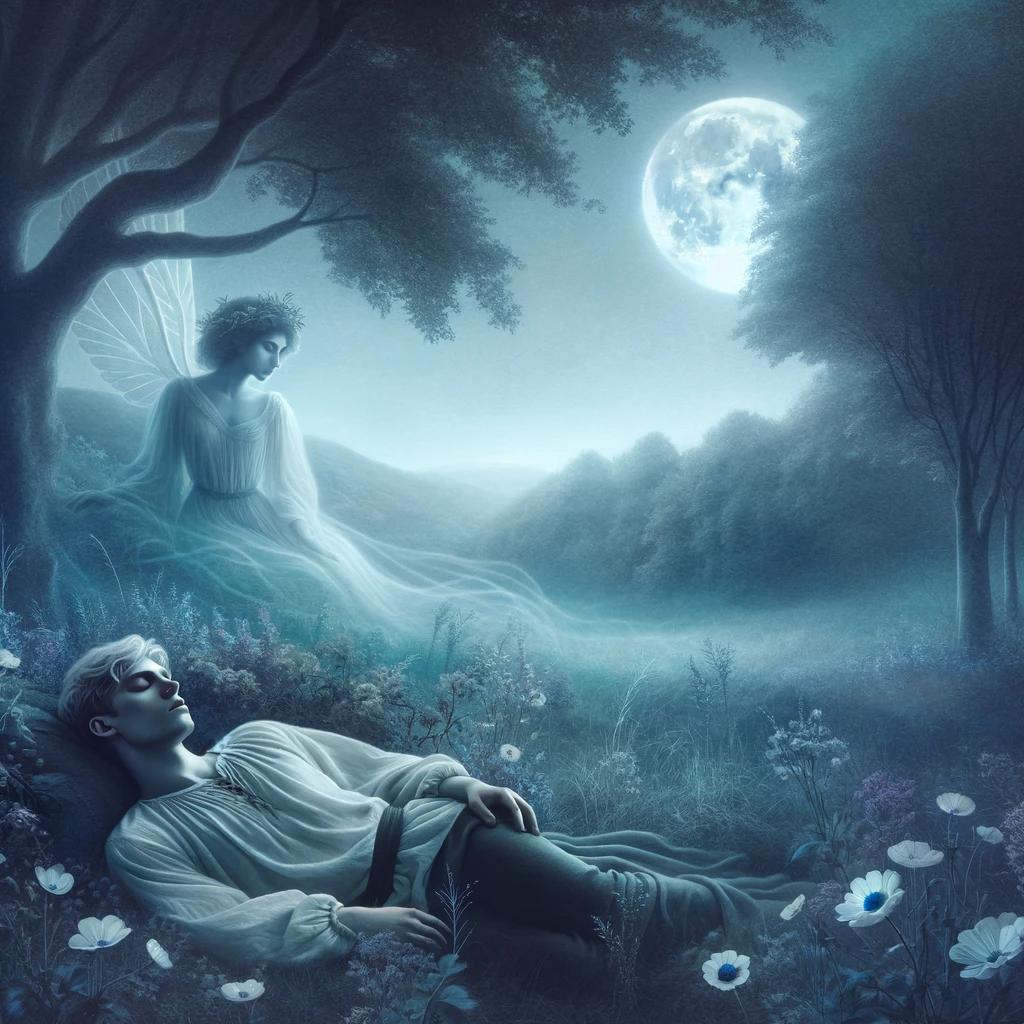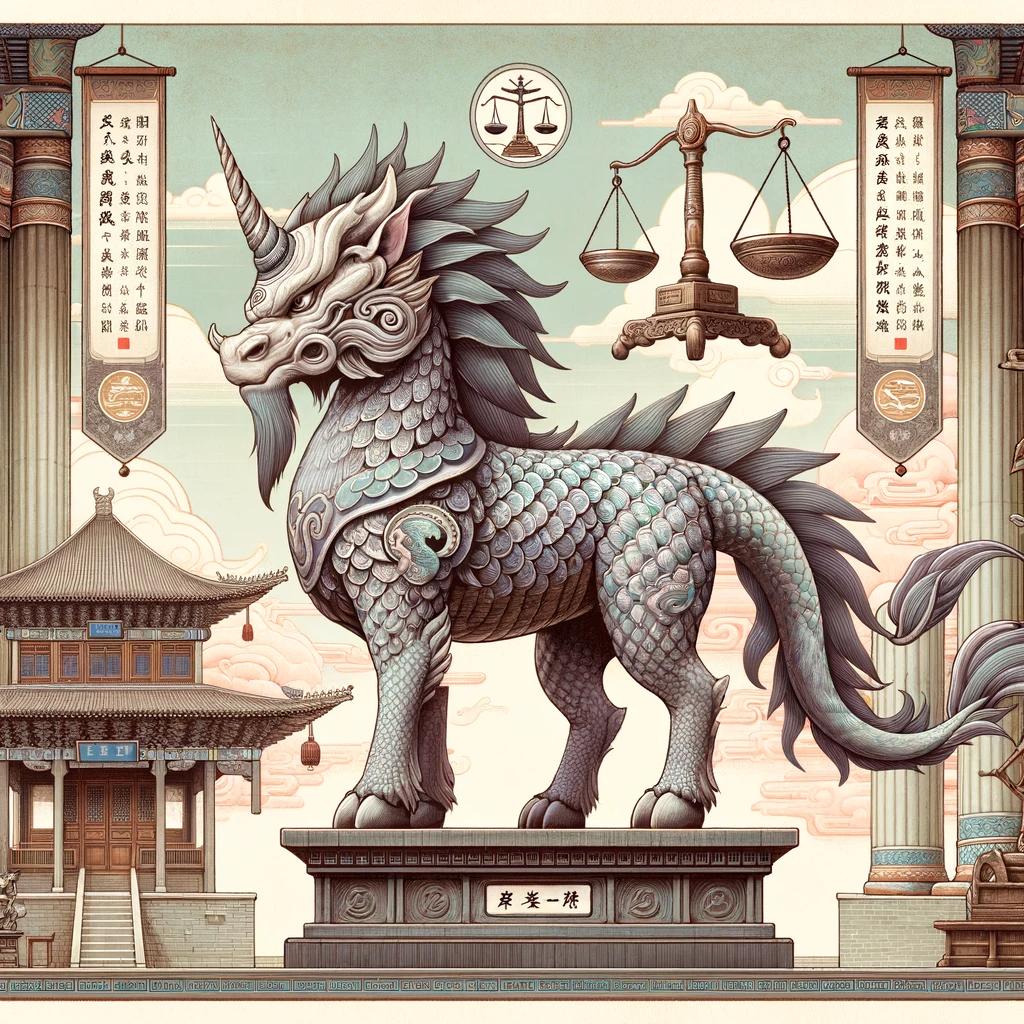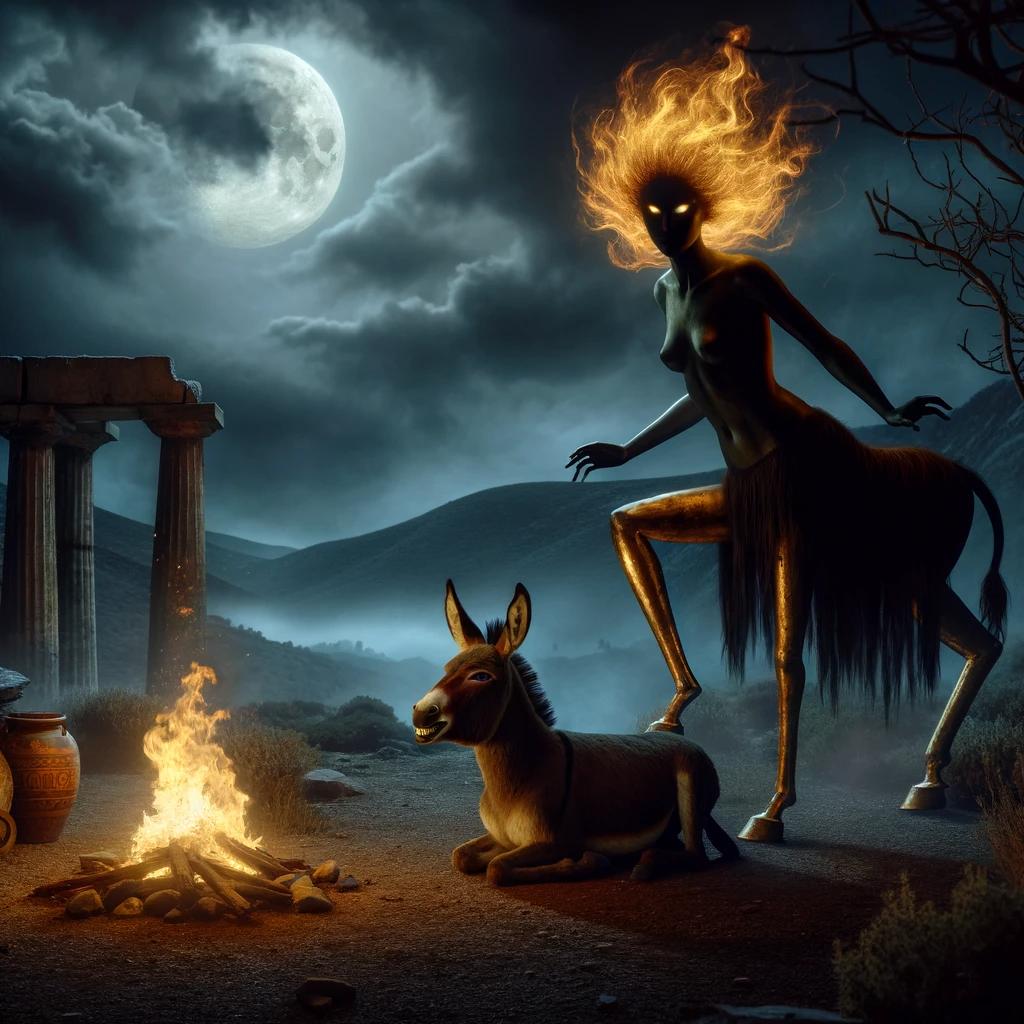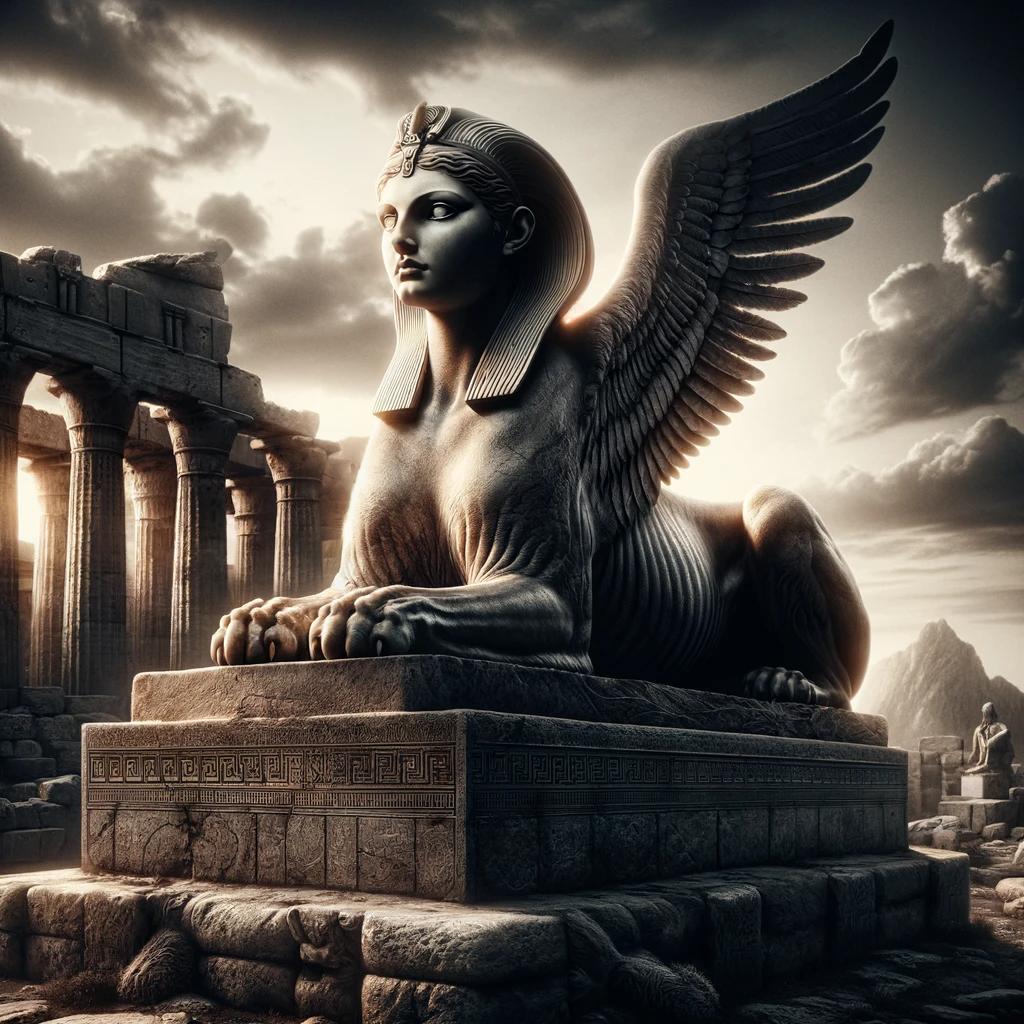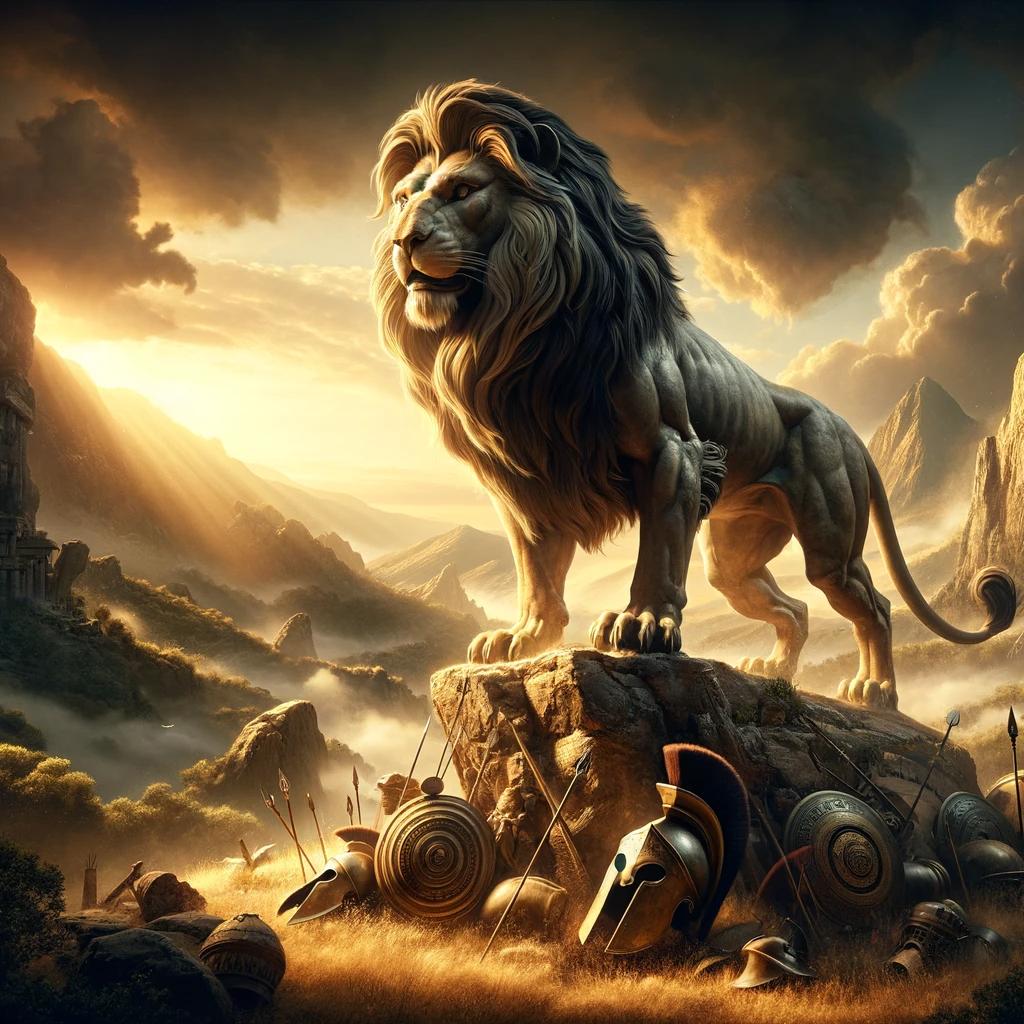What is a Satyr in Greek Mythology: A Fascinating Exploration
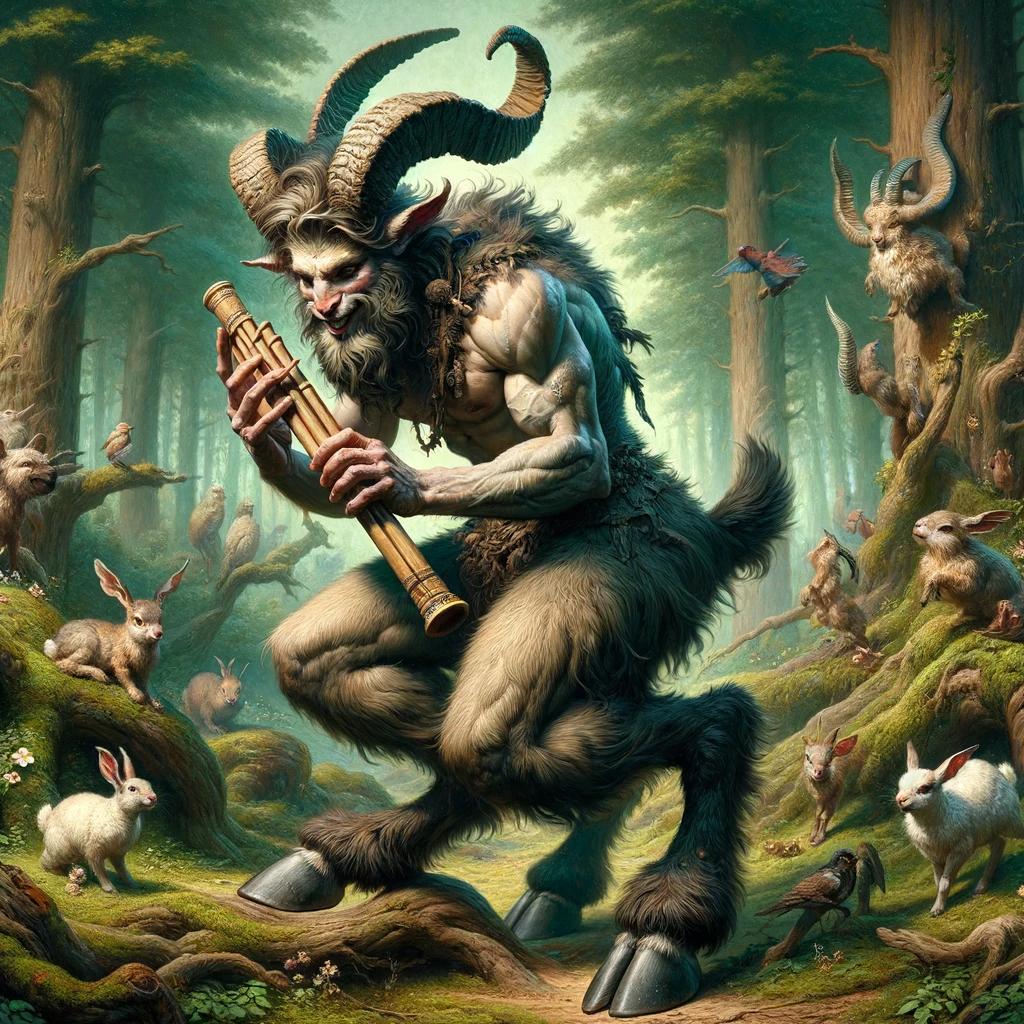
Satyrs, fascinating creatures in Greek mythology, were male nature spirits known for their wild and licentious behavior. With animal characteristics like horse-like ears and a permanent erection, they were closely associated with the god Dionysus. In ancient Athens, satyrs even formed choruses in satyr plays, parodies of tragedies known for their obscene and humorous content.
These mythical beings have captivated artists through the ages, evolving from beastly creatures to more human-like figures. Explore the origins, symbolism, and cultural significance of satyrs in Greek mythology and their enduring presence in art, literature, and popular culture.
The Origins of Satyrs in Greek Mythology
Satyrs are mythical creatures deeply rooted in ancient Greek beliefs and mythology. Their origins can be traced back to the rich ancient culture and diverse pantheon of gods and spirits worshipped by the ancient Greeks.
Ancient Greek Beliefs and Mythology
The ancient Greeks had a complex belief system, attributing various aspects of life and nature to different gods and spirits. They believed that these deities and supernatural beings played a significant role in shaping the world and influencing human existence.
The Introduction of Satyrs in Greek Mythology
The introduction of satyrs in Greek mythology can be attributed to their close association with the god Dionysus, the deity of wine, fertility, and revelry. Dionysus was often depicted accompanied by a retinue of satyrs, highlighting their integral role in his divine domain.
Mythological Depictions of Satyrs
Mythological depictions of satyrs showcase their distinctive physical characteristics and wild behavior. Originally portrayed with horse-like legs, satyrs later evolved to have human legs, with their overall appearance described as comically grotesque.
Symbolism and Significance of Satyrs
Satyrs hold symbolic meaning in Greek mythology, representing untamed nature, sensuality, and the primitive instincts within humans. They were often associated with wilderness, forests, and hedonistic celebrations, reflecting humanity’s dual nature.
Satyrs: Half Man, Half Goat
Satyrs are fascinating creatures in Greek mythology, embodying a unique blend of human and animal characteristics. This section explores their physical traits, the evolution of their representations over time, their presence in art and literature, as well as the cultural perceptions and interpretations surrounding them.
Physical Characteristics of Satyrs
Satyrs are commonly depicted as beings with the upper body of a human and the lower body of a goat. They have muscular torsos, often adorned with chest hair, while their lower half features goat legs and hooves.
Satyrs also possess a pair of small, pointed horns on their heads. Their faces are often depicted as mischievous, with wide grins and close-set eyes.
Evolution of Satyr Representations
The portrayal of satyrs has evolved throughout history, reflecting changing artistic styles and cultural influences. Initially depicted with horse-like legs, they gradually transitioned to having human legs by the 6th century BC.
Over time, their bestial features became less pronounced, and they began to acquire more human-like attributes. During the Renaissance, satyrs were often depicted with goat legs and horns, a representation that has persisted in Western art since then.
Satyrs in Art and Literature
Satyrs hold a prominent place in both ancient and modern artistic and literary works. In Greek pottery, they are often depicted engaging in revelry, playing musical instruments, and chasing after nymphs.
Their playful and mischievous nature made them popular subjects for artists and writers alike, with notable works featuring satyrs found in various forms of visual and written media.
Cultural Perceptions and Interpretations
Throughout history, satyrs have been seen as symbols of the untamed and primal forces of nature.
They embody the freedom and wildness associated with the wilderness and play a significant role in Dionysian traditions. In popular culture, satyrs have been depicted as mystical beings with a love for merriment, music, and wine.
Their depiction varies across different cultures, and their role and symbolism are interpreted differently in various mythological traditions.
Satyrs vs Fauns: Similarities and Differences
In Greek and Roman mythology, both satyrs and fauns are nature spirits associated with untamed wilderness and fertility. While they share some similarities, there are distinctive features that set them apart.
Let’s explore the characteristics of each and the cultural variances in depicting them.
Satyrs and Fauns in Greek and Roman Mythology
In Greek mythology, satyrs were companions of Dionysus, the god of wine and celebration. They were often depicted as half-human and half-goat, with goat-like features such as horns, ears, and a goat tail.
On the other hand, fauns originated in Roman mythology as forest-dwelling spirits. They possessed the lower body of a goat but retained a human-like upper body.
Distinctive Features of Fauns
While both satyrs and fauns have goat-like lower bodies, there are notable differences between them. Fauns typically have a pair of small goat horns on their heads and lack the pronounced horse-like ears present in satyr depictions.
Additionally, fauns are often portrayed with a more mischievous and playful demeanor compared to the lustful and rowdy nature associated with satyrs.
Comparing and Contrasting Satyrs and Fauns
When comparing satyrs and fauns, one key distinction lies in their cultural origins. Satyrs originate from Greek mythology and embody the Greek ideals of unrestrained revelry and earthly desires. Fauns, on the other hand, emerged from Roman mythology and reflect the Roman fascination with the natural world and rustic simplicity.
Physically, satyrs are often depicted with more bestial attributes, such as hooves and larger horns, while fauns maintain a slightly more human-like appearance. Furthermore, their behavior and associations differ: satyrs are closely associated with Dionysus and participate in wild celebrations, while fauns are often associated with woodland deities and guardians of natural landscapes.
Cultural Variances in Depicting Satyrs and Fauns
Throughout history, the depiction of satyrs and fauns varied across different cultures and artistic interpretations. Artists often incorporated local traditions and beliefs, resulting in variations in their physical attributes, behaviors, and symbolism.
For example, in ancient Greek art, satyrs were often portrayed as lively and boisterous figures, while Roman portrayals of fauns leaned towards a more playful and whimsical portrayal.
In contemporary works, both satyrs and fauns have entered the realm of popular culture, appearing in literature, film, and other media.
Their depictions continue to evolve, blending elements from various mythological sources and cultural influences, while remaining emblematic of the untamed and mischievous aspects of the natural world.
- Distinctive features set satyrs and fauns apart.
- Satyrs originate from Greek mythology, while fauns emerged from Roman mythology.
- Satyrs possess more bestial attributes, while fauns maintain a more human-like appearance.
- Satyrs are associated with wild celebrations, whereas fauns are guardians of natural landscapes.
- Depictions of satyrs and fauns vary across cultures and artistic interpretations.
Chiron and Percy Jackson: The Centaur Connection
Chiron, a notable figure in Greek mythology, holds a special place in the realm of centaurs.
As the wise and noble centaur, Chiron was known for his exceptional knowledge and mentoring abilities.
Who is Chiron in Greek Mythology?
In Greek mythology, Chiron was a centaur who differed from his counterparts. While other centaurs were often depicted as wild and unruly, Chiron stood out for his wisdom, intellect, and gentle nature.
He was known as a teacher, healer, and mentor to many prominent heroes and mythical figures.
Chiron’s Role in Ancient Tales
Chiron played a significant role in numerous ancient tales and myths. He served as the tutor and mentor of heroes such as Jason, Achilles, and Hercules, imparting his knowledge in various fields, including medicine, music, and hunting.
Chiron’s presence in these stories often highlighted the importance of education, guidance, and self-improvement.
Chiron’s Adaptation in the Percy Jackson Series
The character of Chiron gained widespread recognition through the popular book series ‘Percy Jackson & The Olympians’ by Rick Riordan. In the series, Chiron assumes the role of the camp director at Camp Half-Blood, a training ground for demigods.
He guides young heroes, including the protagonist Percy Jackson, offering wisdom, support, and valuable lessons.
Cultural Impact and Popular Imagery of Chiron
Chiron’s portrayal in Greek mythology and modern works like the Percy Jackson series has left a lasting impact on popular culture. His representation as a knowledgeable centaur has become synonymous with mentorship and guidance.
Chiron is often depicted as a wise old centaur with profound wisdom and a benevolent demeanor, inspiring countless artists, writers, and creators.
Satyrs in Dionysian Traditions
The association between satyrs and Dionysus, the Greek god of wine, revelry, and ecstasy, is of great significance in Greek mythology. Dionysus, also known as Bacchus, was often depicted surrounded by satyrs, highlighting their close connection in Dionysian traditions.
Dionysus and His Association with Satyrs
Dionysus, the son of Zeus and the mortal princess Semele, held a special bond with satyrs. These mischievous and lustful beings were considered the companions and followers of Dionysus, accompanying him in his wild revelries and celebrations.
Dionysian Festivals and Rituals
Dionysian festivals, such as the famous Dionysia in Athens, played a crucial role in ancient Greek culture. These festivals involved energetic and uninhibited celebrations, including music, dance, theater performances, and processions.
Satyrs were essential participants in these festivities, actively contributing to the revelry and adding an element of playful chaos.
The Role of Satyrs in Dionysian Celebrations
Satyrs played various roles in Dionysian celebrations. They would engage in raucous dancing, often accompanied by their characteristic musical instruments, such as panpipes and tambourines. Satyrs’ wild and unpredictable behavior added an element of spontaneity to the festivities, reflecting the chaotic and uninhibited nature associated with Dionysus and his worship.
Influence of Dionysian Traditions on Satyr Depictions
The Dionysian traditions strongly influenced the artistic depictions of satyrs. Artists sought to capture the dynamic and energetic nature of Dionysian revelries in their portrayals of satyrs. These depictions often featured satyrs engaged in lively dancing, playing musical instruments, or indulging in festivities alongside Dionysus and other revelers.
The depiction of satyrs in Dionysian traditions not only highlighted their association with Dionysus but also emphasized their role in the celebration of life, joy, and uninhibited revelry that characterized these ancient rituals.
Satyrs in Ancient and Classical Art
Satyrs, fascinating creatures in Greek mythology, have significantly influenced ancient and classical art. Their depictions can be found in various art forms, including Greek pottery, sculpture and statuary, as well as mosaics and frescoes.
These artistic representations provide valuable insights into the evolving perception and symbolism of satyrs throughout history.
Depictions of Satyrs in Greek Pottery
Greek pottery serves as a significant artistic medium showcasing the portrayal of satyrs. Painted with intricate details, pottery often depicted satyrs engaged in revelry, dance, and other Dionysian activities. These depictions illustrated their wild and playful nature, entrenched in the ancient Greek culture.
Satyrs in Sculpture and Statuary
Sculptures and statuary prominently featured satyrs, capturing their physical characteristics and mischievous essence. These three-dimensional representations demonstrated their association with nature through poses that emphasized their hybrid nature, showcasing their horse-like ears, tails, and, in some cases, goat-like features.
Satyrs in Mosaics and Frescoes
Mosaics and frescoes further showcased the presence of satyrs in ancient and classical art. These intricate artworks depicted satyrs in various contexts, including scenes of Dionysian celebrations, dancing, playing musical instruments, and interacting with other mythological figures such as nymphs and maenads.
These vibrant and detailed compositions brought life and movement to the mythological realm.
Evolution of Satyr Representations in Art
Over time, the depiction of satyrs in art underwent an evolution. From their early representations with predominantly animalistic features, satyrs gradually acquired more human-like characteristics. This evolution reflected the changing cultural perspectives and artistic styles of different periods, as well as the intermingling of satyr imagery with other mythological beings like fauns and panes.
Satyrs in Literature and Drama
Satyrs have long played a significant role in both literature and drama, captivating audiences with their mischievous nature and unique charm. This section delves into the various aspects of their presence in literary works and dramatic performances, exploring their influence on Greek tragedies, notable works featuring satyrs, and their continued portrayal in modern literature and fantasy.
Satyric Plays: A Unique Genre
Satyric plays, a distinct genre in ancient Greece, were a fascinating combination of comedy and drama. These plays typically featured a chorus of satyrs, bringing their playful and irreverent spirit to the stage.
Satyric plays served as a counterbalance to the intensity of Greek tragedies, providing comedic relief while still exploring deeper themes.
The Influence of Satyrs on Greek Tragedies
Satyrs had a significant influence on Greek tragedies, appearing as supporting characters or integral components of the overall storyline. Their inclusion often added light-heartedness and humor to an otherwise serious narrative.
Satyrs were known for their interactions with other mythological figures, providing a contrast of wildness and spontaneity against the structured world of tragedians.
Notable Works Featuring Satyrs
Throughout literary history, notable works have depicted satyrs in various forms. Perhaps the most famous example is Euripides’ play “Cyclops,” which features satyrs as the central characters. Other works, such as plays by Aeschylus and Sophocles, also incorporated satyrs into their narratives, further solidifying their significance in Greek literature.
Satyrs in Modern Literature and Fantasy
The allure of satyrs has transcended ancient times, finding a place in modern literature and fantasy. Writers and authors continue to draw inspiration from these mythical creatures, incorporating them into contemporary works.
Satyrs often appear as supporting characters or as protagonists in fantastical settings, captivating readers with their playful nature and connection to the natural world.
Satyrs as Nature Spirits and Wild Men
Satyrs and their Connection to Nature
Satyrs, as creatures of Greek mythology, have a deep connection to the natural world.
They are often depicted as frolicking and dancing in forests, mountains, and meadows, reveling in their wild and untamed surroundings. Through their association with nature, satyrs symbolize the untamed and primal forces of the wilderness.
Satyrs in Folklore and Folk Traditions
The legends and folk traditions surrounding satyrs have been passed down through generations. In many cultures, they are believed to be mischievous and unpredictable beings who dwell in the woods. Folklore often portrays them as guardians of nature or playful tricksters, occasionally befriending or guiding lost travelers through their natural habitats.
Satyrs as Symbolic Representations of the Wild
The wild and untamed nature of satyrs makes them potent symbols of freedom and primal instincts. They embody the wild side of humanity, representing chaos, passion, and unbridled energy. Satyrs serve as a reminder of the unexplored realms within ourselves and the beauty of embracing our natural desires and instincts.
Contemporary Folklore and Beliefs about Satyrs
In contemporary culture, satyrs continue to capture the imagination through various mediums. They often appear in fantasy literature, role-playing games, and even modern art as symbols of untamed natural forces. While many view them as mythical creatures, some individuals still hold beliefs and spiritual connections to satyrs, honoring their wild spirit and embracing their elemental essence.
Satyrs and their Connection to Nature
Satyrs, as creatures of Greek mythology, have a deep connection to the natural world. They are often depicted as frolicking and dancing in forests, mountains, and meadows, reveling in their wild and untamed surroundings.
Through their association with nature, satyrs symbolize the untamed and primal forces of the wilderness.
Satyrs in Folklore and Folk Traditions
The legends and folk traditions surrounding satyrs have been passed down through generations. In many cultures, they are believed to be mischievous and unpredictable beings who dwell in the woods. Folklore often portrays them as guardians of nature or playful tricksters, occasionally befriending or guiding lost travelers through their natural habitats.
Satyrs as Symbolic Representations of the Wild
The wild and untamed nature of satyrs makes them potent symbols of freedom and primal instincts. They embody the wild side of humanity, representing chaos, passion, and unbridled energy. Satyrs serve as a reminder of the unexplored realms within ourselves and the beauty of embracing our natural desires and instincts.
Contemporary Folklore and Beliefs about Satyrs
In contemporary culture, satyrs continue to capture the imagination through various mediums. They often appear in fantasy literature, role-playing games, and even modern art as symbols of untamed natural forces. While many view them as mythical creatures, some individuals still hold beliefs and spiritual connections to satyrs, honoring their wild spirit and embracing their elemental essence.
Satyrs in Popular Culture
Satyrs, with their distinctive half-human, half-animal appearance and mischievous nature, have left a lasting imprint on popular culture. From film and television to video games, contemporary fashion and design, and their enduring popularity in modern culture, satyrs continue to captivate and inspire audiences.
Satyrs in Film and Television
Satyrs have made appearances in various films and television shows, often depicted as mythical creatures that add an element of fantasy and magic to the storylines. They can be seen in both live-action and animated formats, bringing their wild and playful energy to the screen.
Satyrs in Video Games and Role-Playing
Video games and the realm of role-playing games have embraced satyrs as unique and fascinating characters. They are often portrayed as agile and cunning beings, capable of using their natural instincts to navigate challenging quests and adventures.
Satyrs in Contemporary Fashion and Design
Contemporary fashion and design have drawn inspiration from the captivating essence of satyrs. Their distinctive features, such as horns and hooves, have been incorporated into clothing, accessories, and even interior design, allowing individuals to embody the untamed spirit of these mythical creatures.
The Enduring Popularity of Satyrs in Modern Culture
Despite centuries passing since their inception in Greek mythology, satyrs remain a beloved and enduring symbol in modern culture. Their representation in various art forms, literature, and popular media continues to fascinate audiences, reminding us of the timeless allure and impact of these nature spirits and wild men.
.

